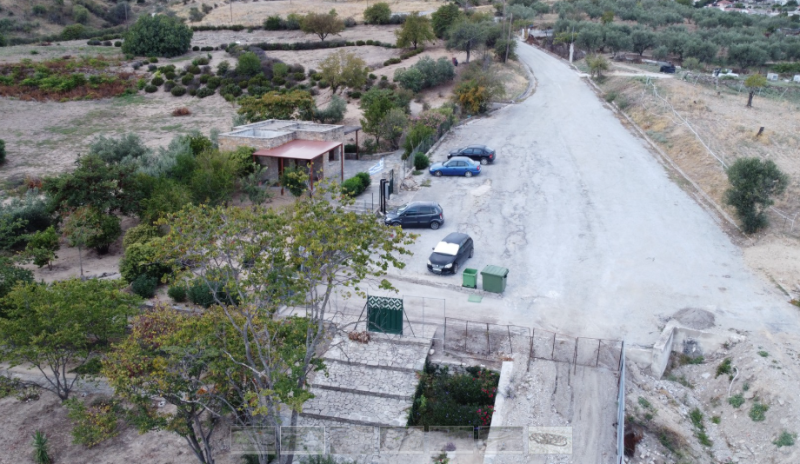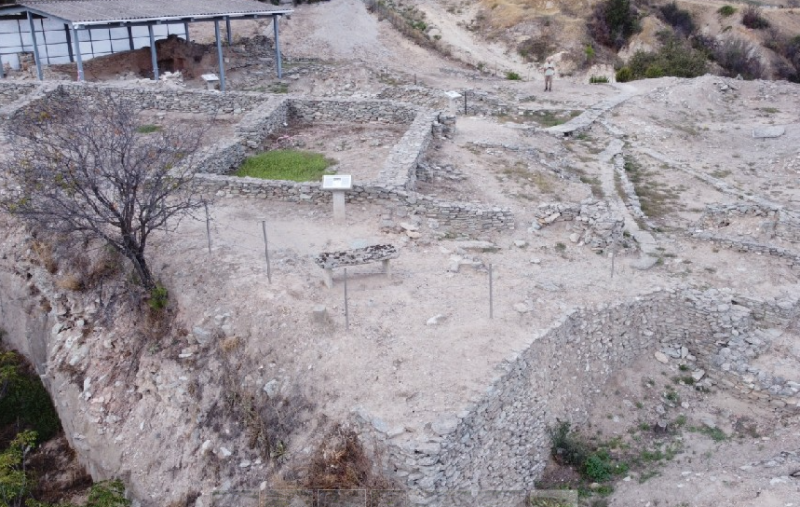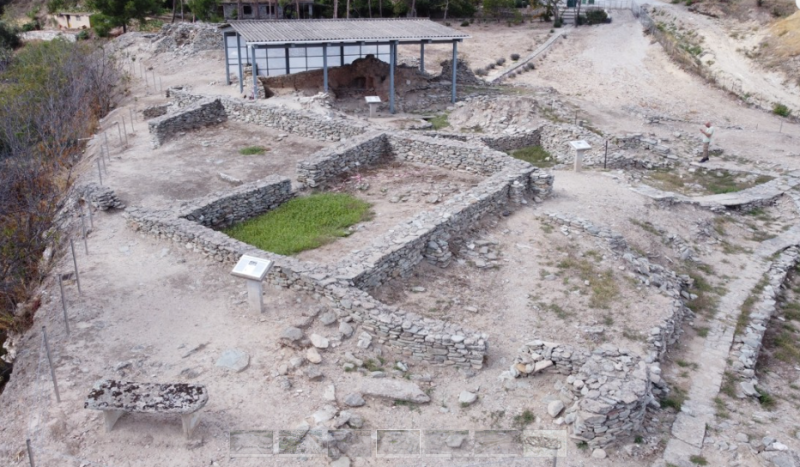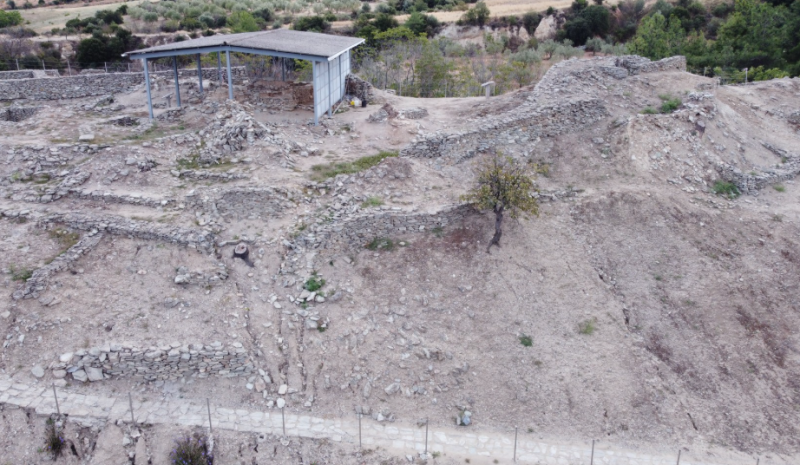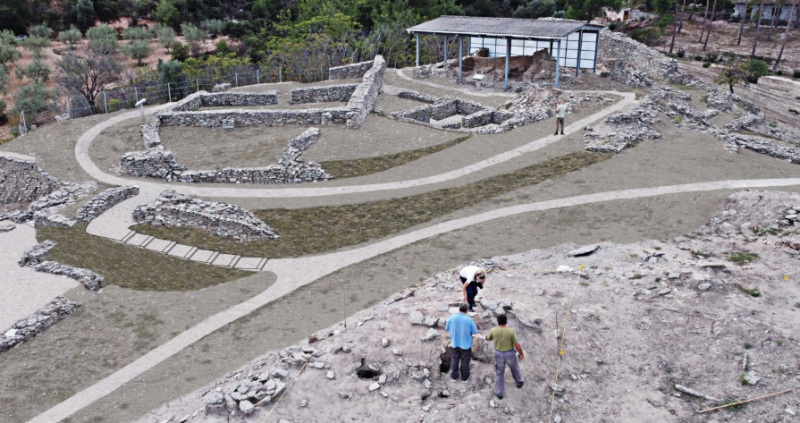The settlement of Sesklo has been damaged by both the fire of 2023 and by Daniel – the statements of the Minister of Culture, Lina Mendoni
The Ministry of Culture proceeds to the integrated protection and promotion of its prehistoric settlement Sesklou A and B in the Aesonia Magnesia. According to a statement from the Ministry of Culture, the planning includes proposals for the overall highlight of the archaeological site, through the interventions of fixing ancient residues, improving the accessibility and management of visitors, as well as flood protection projects of the particularly important archaeological site.
The Sethaklo settlement has been damaged by both the fire of 2023 and the Daniel. Projects for protection and shielding from the phenomena of climate change in the archaeological site are funded by the sponsorship of the Greek Shipowners’ Union to the Ministry of Culture to restore the monuments affected by Daniel, with a total budget of 10,000,000 euros.
The Minister of Culture Lina Mendoni He said: “The archaeological site of Sesklo, in Thessaly, is one of the most important and ancient Neolithic settlements in Greece and Europe. It was developed on Kastraki hill and in the surrounding area, near the present village of Sesklo and dates from the beginning of the Neolithic era (7th millennium BC) to the Middle Bronze Age (2nd millennium BC), with acne in the 5th millennium BC. during the Middle Neolithic period. This period is identified with the so -called “Sesklo Culture” during which the clay -firing technique and their written decoration has been developed and improved significantly. As it is the oldest example in the Greek area, where the architecture of buildings and the organization of a settlement is recognized, it has an important place in the evolution of architecture. “
According to Ms Mendoni, “the preservation of the impressive mansion and parts of the enclosures, which are the core of the building residues of the modern Neolithic period, offers a unique example of the evolution of settlements and the architecture of the time. The protection of the archaeological site, and in particular the walls and foundations of Sesklo A and B, is a difficult and multifaceted object because of the importance of findings, vulnerability of building residues and the pathogenesis of the girlfriend covering the ancient relics. Protection work has been done in the past, but after more than twenty years since the latest interventions, fire and floods of 2023, which affected the archaeological site, there are significant problems related to the preservation of building residues, as well as its readability. Our goal is to make the most comprehensive management of these problems as possible, improve the accessibility and readability of the prehistoric settlement as it has been steadily increasing traffic in recent years. The main problems found in the archaeological site are related to the retaining function of some walls, the underlying foundations, the non -perception of the sites and the building phases, the newest slabs confused with ancient constructions, the erosion of Magoula and the management of the rainwater. Thanks to the Hellenic Shipowners’ Union, President Melina Travlou and the members of the Board of Directors, for their support for the Ministry of Culture for the restoration of the affected monuments from the devastating floods of 2023. “
According to the announcement of the Ministry of Culture, the architectural study of the fastening, restoration and highlights of the building residues of the Prehistoric Settlement Settlement A and B had a coordinating role in all studies, with the aim of developing solutions for the protection and restoration of removal buildings, of him.
The proposal to organize the space in Sesklo A concerns the maintenance of the existing visit, which was imposed by the geomorphology of Magoula and its remains. In order to be more readable the space of visitors, two distinct areas, the Hall and the group of houses, are formed, where the visitor can hire a characteristic picture of the unique settlement that is the period of the “Culture of Sesklo”.
The Acropolis is proposed to remove the constructions of the 1970s and 1980s from slate, which are often confused with authentic constructions and the formation of a new browsing route that allows for the access. The route is made in the same position as the existing one. Along the south side, a ditch of rainwater removal is made. The rise route to the southwest of the Acropolis is abolished. At the same time, maintenance work of existing buildings (entrance, offices and warehouses) are being launched. Outside the central entrance, procedures for changing the slope of the road, as well as the arrangement of waters at the road end, are evolving.
Based on the conclusions of the static study of fastening, restoring and highlighting the building residues the existing retaining wall is expanded, the hill is restored in place of southern landslide and the assumption of construction is enhanced. The drainage study for the management of the surface water of building residues involves the protection of the archaeological site from flooding, the management of surface runoffs in the building residues of prehistoric settlements and in the rest.
At the same time, the preparation of a special plant study, which includes a plan to manage native vegetation in the building residues, with the aim of exploiting species protecting against surface erosion and highlight the residues, as well as the addition of appropriate ornamental germinations such as germinations such as functional germinations.
Source :Skai
I am Frederick Tuttle, who works in 247 News Agency as an author and mostly cover entertainment news. I have worked in this industry for 10 years and have gained a lot of experience. I am a very hard worker and always strive to get the best out of my work. I am also very passionate about my work and always try to keep up with the latest news and trends.


